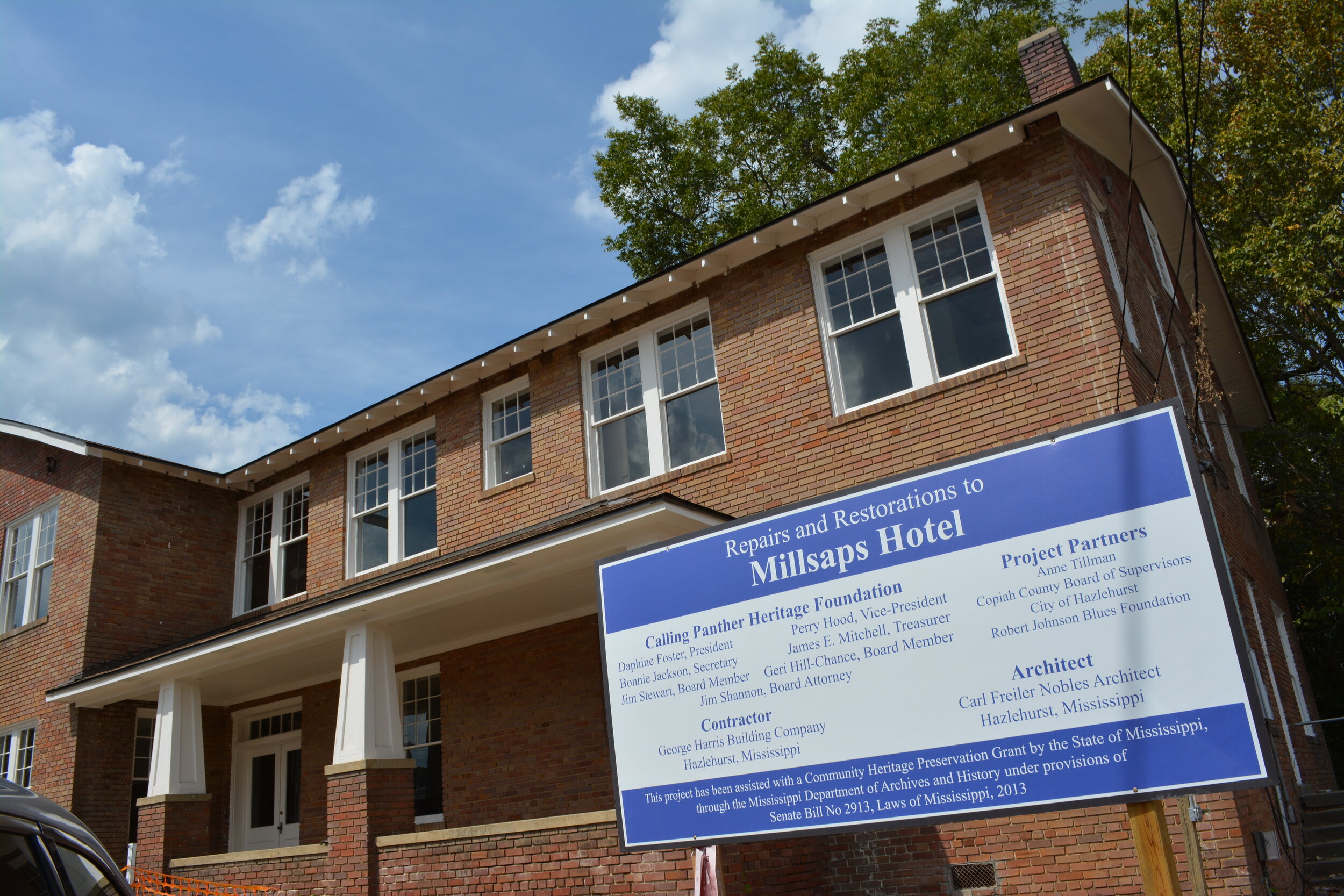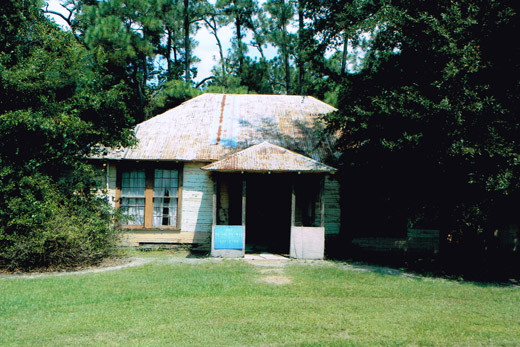2013
33rd Avenue High School
Gulfport
Constructed in 1954 under the “separate yet equal” doctrine of school segregation, the 33rd Avenue High School was once a focus of pride for the Quarters neighborhood. Designed by Gulfport architect Milton B.E. Hill, 33rd Avenue High School tells an important story about race relations and the equalization period in Mississippi. When Gulfport Public Schools were integrated in 1969, 33rd Avenue High School was closed. Before Hurricane Katrina, the building was used as the Gulfport Job Corps Center. Following the storm, local advocates fought hard to have the damaged building secured and restored. After years of being left open to the elements, the school is being demolished to make way for a new Job Corps Center.
Isaiah T. Montgomery House
Mound Bayou
Built in 1910 by the founder and first mayor of Mound Bayou, the Isaiah T. Montgomery House has tremendous significance to the history of Mississippi. Born a slave on the plantation of Joseph Davis, brother of Jefferson Davis, Isaiah T. Montgomery led fellow freed slaves to establish the African American community of Mound Bayou in 1887. By the early twentieth century, Mound Bayou was one of the most prosperous communities in the state. After Montgomery’s death, the house served as headquarters for the nurses and doctors from Meharry Medical School in Nashville who were working at the Taborian Hospital. Today, a restoration of the house is underway.
Mendenhall High School Auditorium
Mendenhall
Built in 1938 in the Art Deco style, Mendenhall High School Auditorium hosted generations of students for proms, plays and graduations until it was closed in 2011. Shortly after it was closed, the auditorium was scheduled to be demolished by Simpson County School District. This decision was met with a large push-back from concerned community members, which inspired the Mississippi Department of Archives and History to designate the auditorium as a Mississippi Landmark in January 2012. A year and a half after designating the Mendenhall High School Auditorium as a Mississippi Landmark, the Mississippi Department of Archives and History Board of Trustees reversed its decision by a 5-2 vote on July 19, 2013 and the school district demolished the structure.
Meridian Police Department
Meridian
Designed by prolific Mississippi architect Chris Risher, the Meridian Police Department was constructed in downtown Meridian in 1977. In May 2013, the police department moved into new headquarters, leaving the fate of the Risher building uncertain. Architects from around the state rallied and advocated for the preservation of this iconic Modernist building. The City of Meridian has not moved forward with plans for demolition but the future of the building is still undecided.
Merrill-Maley House
Jackson
The Merrill-Maley House was built in 1907 by Philip S. Merrill, manager of the George B. Merrill and Brothers Lumber Company. The house later became the home of Charles E. Maley, another lumberman from the area. Over the years, the Merrill-Maley House has been used as a social club for servicemen during World War II, a women’s dress shop, an apartment building and an antique store. After years of neglect, the building was recently restored to become a senior center.
Millsaps Hotel
Hazlehurst
Built in 1907, the Millsaps Hotel was once a center of community life when Hazlehurst was a major agricultural hub and produce shipping center. Vacant for many years, demolition seemed imminent until the Calling Panther Heritage Foundation stepped in to accept the donation of the Millsaps Hotel. With the help of the Community Heritage Grant Program, the hotel is being restored to become a community center.
Moss Point Central Fire Station
Moss Point
The Moss Point Central Fire Station was constructed in 1926 and served many purposes for the Moss Point community over its history, including city hall, a public bath house, a jail, a police station, a library, and a fire station. The Moss Point Historical Commission was a vocal advocate for restoring the building for a new community use. They submitted applications for the Moss Point Central Fire Station to be listed as both a local and Mississippi Landmark. Despite their efforts the Moss Point City Council voted 6-1 to demolish the building at a meeting in 2013, and then demolished the structure in 2015 without obtaining approval from the Mississippi Department of Archives and History.
Southern Christian Institute
Edwards
The Southern Christian Institute was established in 1882 by the Home Missionary Society of the Disciples of Christ to offer a religious education to African Americans. From its modest beginnings in the former plantation home of Colonel McKinney L. Cook, the school grew in the early 1900s with several new buildings being constructed from lumber milled on site by students. In 1953 the institute merged with Tougaloo College and later became a training facility for Civil Rights workers under the direction of Bob Moses and Bernice Robinson, members of the Student Non-Violent Coordinating Committee. In the 1970s the Bonner Campbell School of Religion used the campus for religious retreats and a Head Start center. The majority of the school’s historic buildings were demolished around 2015.
Webster County Courthouse
Wathall
Webster County Courthouse was constructed in 1915 by prominent Mississippi architect N.W. Overstreet. This grand Beaux Arts structure was the centerpiece for community life in Webster County for nearly a hundred years. On January 17th, 2013, an early morning fire severely damaged the courthouse. Despite community efforts to save the building, the courthouse was demolished in 2016. Since that time, the foundation of the courthouse has been repurposed as a park.
West Pascagoula Colored School
Gautier
West Pascagoula Colored School was constructed in 1921 with funding from the Jackson County Board of Supervisors. Ms. Ernestine Fountain, a beloved teacher at the school, taught approximately 22 students each year in this one-room schoolhouse which was heated by a pot-belly stove. The school closed in 1946 and the building was used as a community center, senior citizen center and voting precinct. Vacant since the 1980s, the City of Gautier is working to restore the schoolhouse to become a museum and event space.







